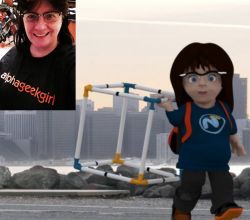RENDERING
Focusing your camera using Autofocus and Depth of Field
| Description | If you're a photographer, when it comes to setting up your cameras for rendering in modo, you'll no doubt understand aperture sizes, what 'depth of field' is, and what F-stops are. But some of us who don't have a feel for these numbers need to eyeball things in order to get them how we want. In this Lux TV video from some time back, Brad shows how to access the advanced feature in the modo toolpipe allowing you to display extra handles to position the camera when using depth of field. He also shows how you can click on a point anywhere within a scene and have the camera focus there automatically. |
||
|---|---|---|---|
| Step-by-Step |
Advanced camera handles
Autofocus under mouse |
||
| Source | You can watch a video that details the process here | ||
| Author | Brad Peebler | ||
Zoom in on Render Preview without moving the camera
Here's a trick for when you need to look at your scene up-close without actually messing things up and moving your render camera
Read moreTexture Bombing - Single Texture
Related Images:
Texture Bombing using multiple images
| Description | Regular textures like the ones shown above are adequate for most jobs, but occasionally you may want to mix it up a bit and create something a little more unique, yet still make it look organic. So for example, say I wanted to use the grass, rocks and sand above to create a random terrain image. Now, I could go into Photoshop and create a mashup of these three textures, but once I'm back in modo, if I had to cover an expansive area, I'd still have to contend with the tiling issue, and in the real-world, having tiled rocks and grass just doesn't cut it. That's where texture bombing comes in. Texture bombing is a procedural technique that helps reduce regular pattern artefacts. We do this by first placing a bunch of different textures into a Group, and then using modo's Texture Replicators, a small copy of one of the Group's images is randomly placed at each vertex across the mesh. From there you can further randomly scale, rotate, and blend the textures together to make the surface appear seamless and quite natural-looking. |
||
|---|---|---|---|
| Preparation | It's assumed that you've already created your mesh item that you wish to apply your textures to. | ||
| Step-by-Step |
Apply textureCorrect GammaIncrease WrapCreate Group of textures

Replace current image with the Group Note: Make sure you have the Render Preview Window open, as texture replicators do not show up in the Open GL viewport.
Note: Make sure you have the Render Preview Window open, as texture replicators do not show up in the Open GL viewport.
Texture Replicator
And this is a quick and dirty random terrain texture created with the three images at the top of the page. 
|
||
| Source | James has recorded two videos on Texture Replicators. The first shows how to make a seamless grass plane, and the second explains texture bombing where you use multiple texture images under a single material. |
||
| Author | MutantPixel (James Darknell) |
||







 100%
100%



